Us App Design And Chinese App Design
7 ways to adapt your mobile app for Chinese consumers — a Facebook case study
Why Western digital products have failed in China
![]()
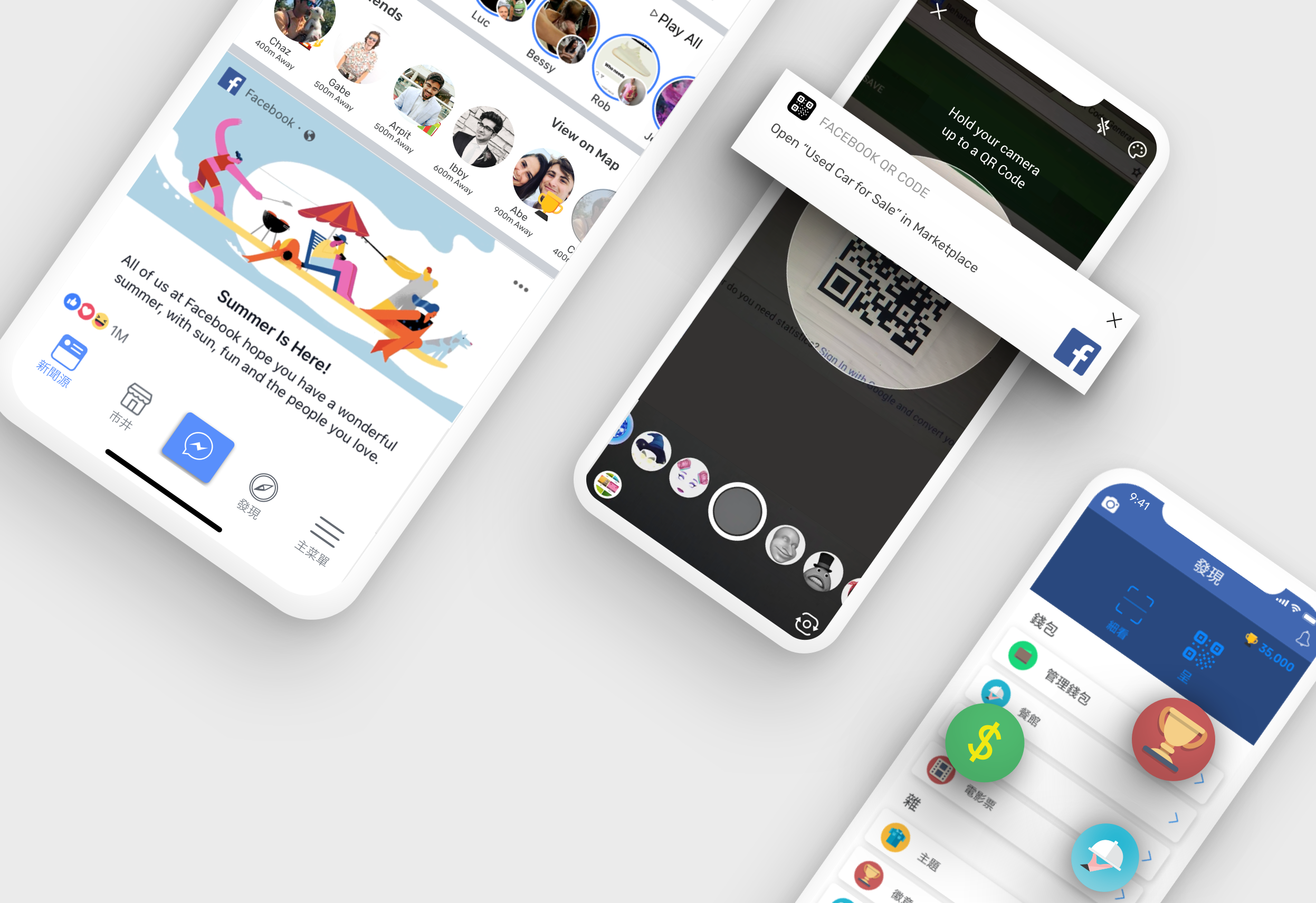
The Introduction
Earlier this year, I spent 4 months studying at the Chinese University in Hong Kong and became fascinated with Chinese digital products.
Due to political, cultural and geographic isolation, China has developed a massive market of digital consumers with different priorities, aesthetic tastes and user behaviors from their western counterparts.
When Yahoo tried to expand its digital presence in China in 2004 to compete with Sina.com, they failed. In 2003, eBay briefly controlled 80% of the Chinese e-commerce market but after making several poor product decisions around chat and fee structure, was out muscled by Taobao, its Chinese equivalent. Uber tried to launch in China, but after losing $1 billion a year, agreed to sell its Chinese business to its competitor, Didi Chuxing.
These failures all follow the same pattern: successful Western companies with Western products attempt to launch in Chinese markets.
This article outlines how a Western social platform like Facebook could be localized to the Chinese market. This process was informed by my own experiences with Chinese mobile apps, user interviews and hours of online research. Feel free to explore the works cited at the end of this article.
A Larger Perspective
One of the main distinctions between American and Chinese mobile apps is the focus on Usability vs Learnability. I found that most Western apps placed a heavy emphasis on having an "Initial Usability" whereas many Chinese apps rely on "Eventual Learnability".
Initial Usability:
- Apps that are simple to download and use
- Minimize initial confusion upon download
- Focus on usability over features
Eventual Learnability:
- Apps that may be initially confusing but have many and/or powerful features
- Built for the power user
- Focus on features over usability
In China, instead of having many single purpose apps (WhatsApp, Snapchat, Venmo, Uber), users can access a range of unique features through one platform: WeChat. WeChat's extensive list of features is very useful to recurring power users but can be overwhelming for a new user not familiar with the app's organization and purpose.
In the United States, most social media apps rely upon a strong Initial Usability in order to convert new users to recurring users. US consumers seem to prefer multiple simple, single purpose applications instead of one super app like WeChat that comes off as more "bloated" than helpful.

Many successful Chinese apps lean heavily on the Learnability side. I used the principle of Learnability throughout my Facebook redesign, starting with the Messenger experience.
Messenger is back!
Chinese social media apps are heavily reliant on chat. Dan Grover, a former Product Manager at WeChat, coined the idea of chat as the "Universal UI" in his well-known article, "Chinese Mobile App UI Trends." In addition to personal messaging, Chinese consumers rely on chat to interact with their favorite brands and public figures through chatbots.

Voice Memos
Because Chinese characters are very difficult to type on a keyboard, many Chinese consumers rely on voice memos. The first few times I used voice memos I found it awkward to hear myself talk over the phone. Yet once I got the hang of it, I found it saved me so much time from typing and my conversations had the same intimacy of a phone call.
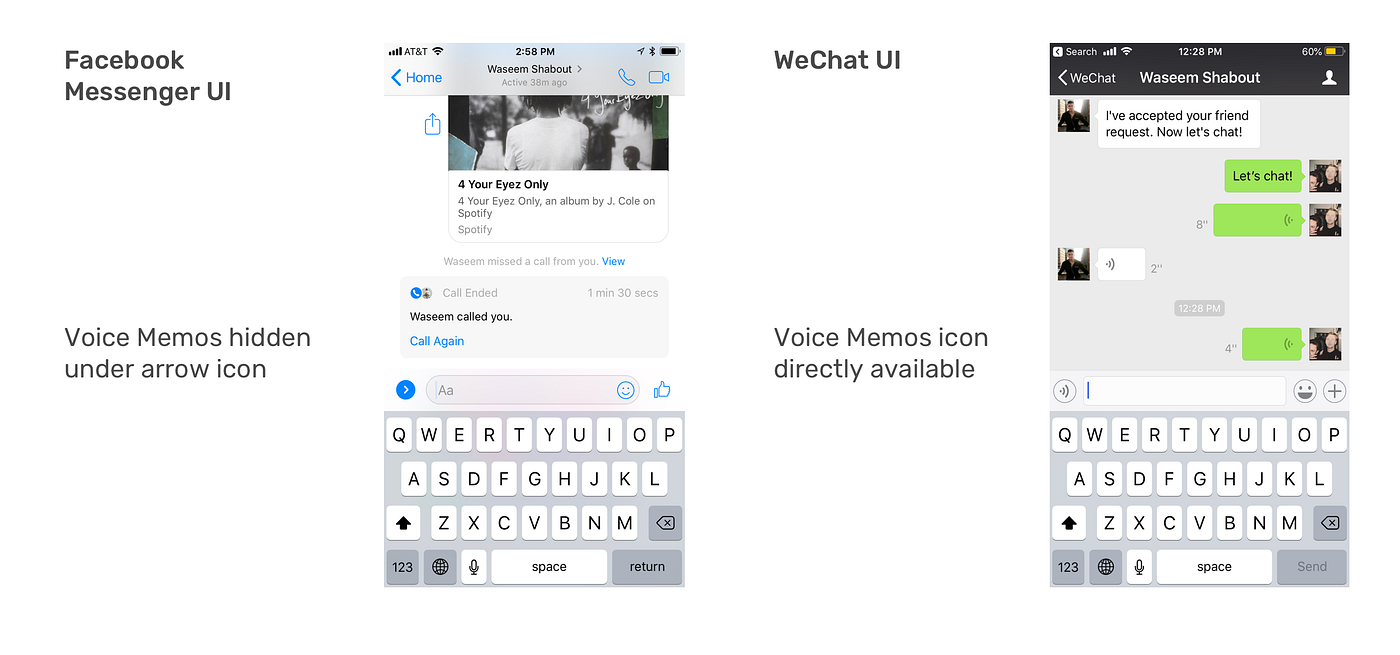
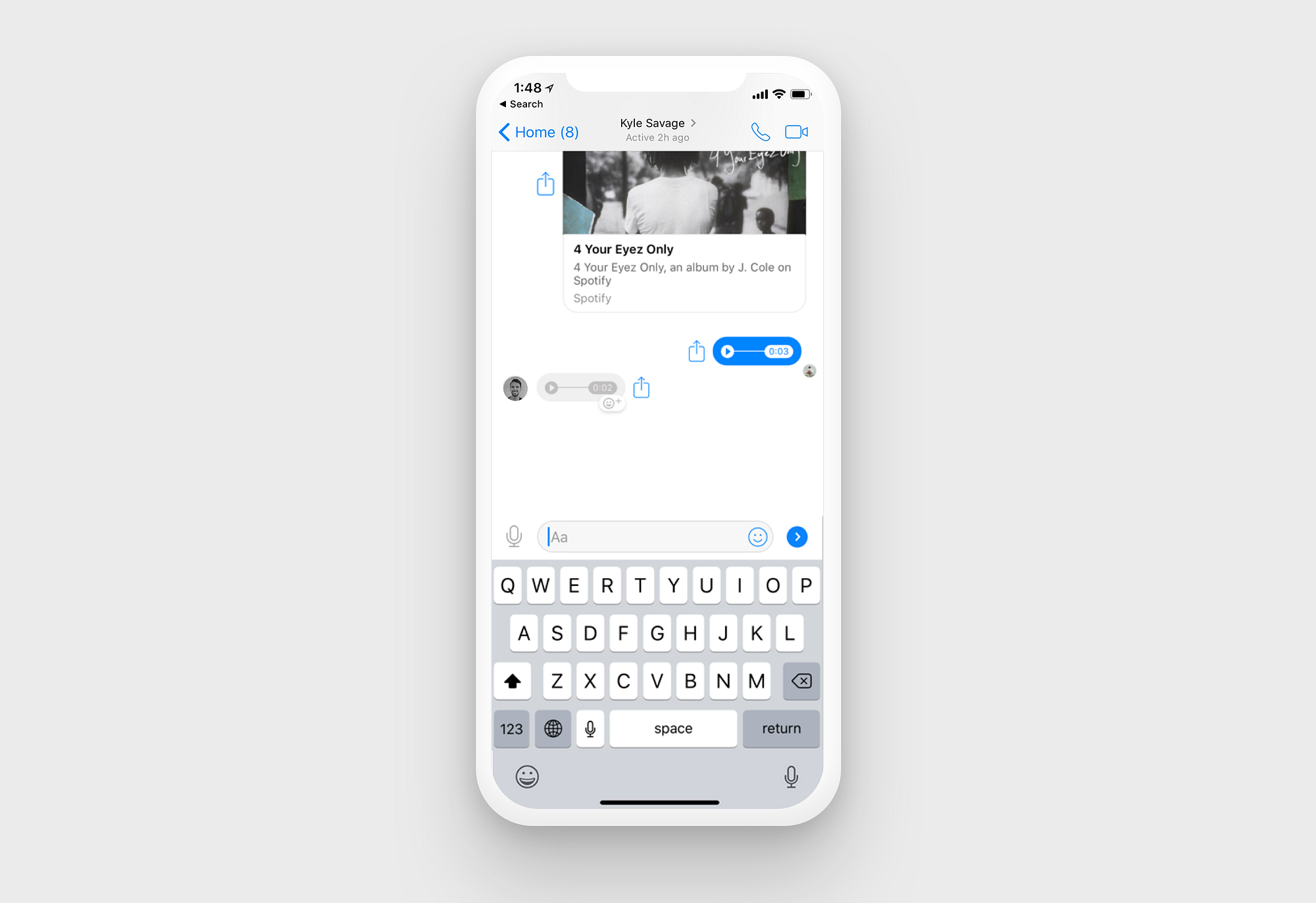
QR Codes
Remember when QR Codes were the "next big thing"? Although a few companies like Facebook, Spotify and Snapchat use QR-based features, adoption for the US market was limited in comparison to the Chinese market.
In China, these QR codes are used widely by businesses, brands and users, to do just about anything, including buy take-out food, get laundry done, order a taxi and far more.
I added this QR functionality to the main page of Messenger, which would allow Chinese consumers to buy products from brands, visit pages and add friends.
Wallet:
Chinese consumers conduct 11 times more mobile payments than their US counterparts!
These mobile payments come from digital wallets, which can be found inside almost every major Chinese mobile app. These wallets allow Chinese consumers to buy things inside the app, buy products in real life (often through QR codes), send payments to their friends, pay for taxis, movie tickets, utility bills, or anything else that you can imagine.
A successful Chinese Facebook app needs a central digital wallet that also integrates with other parts of the Facebook experience — QR Code scanning, sending money to Facebook friends and the Facebook marketplace (just to name a few).
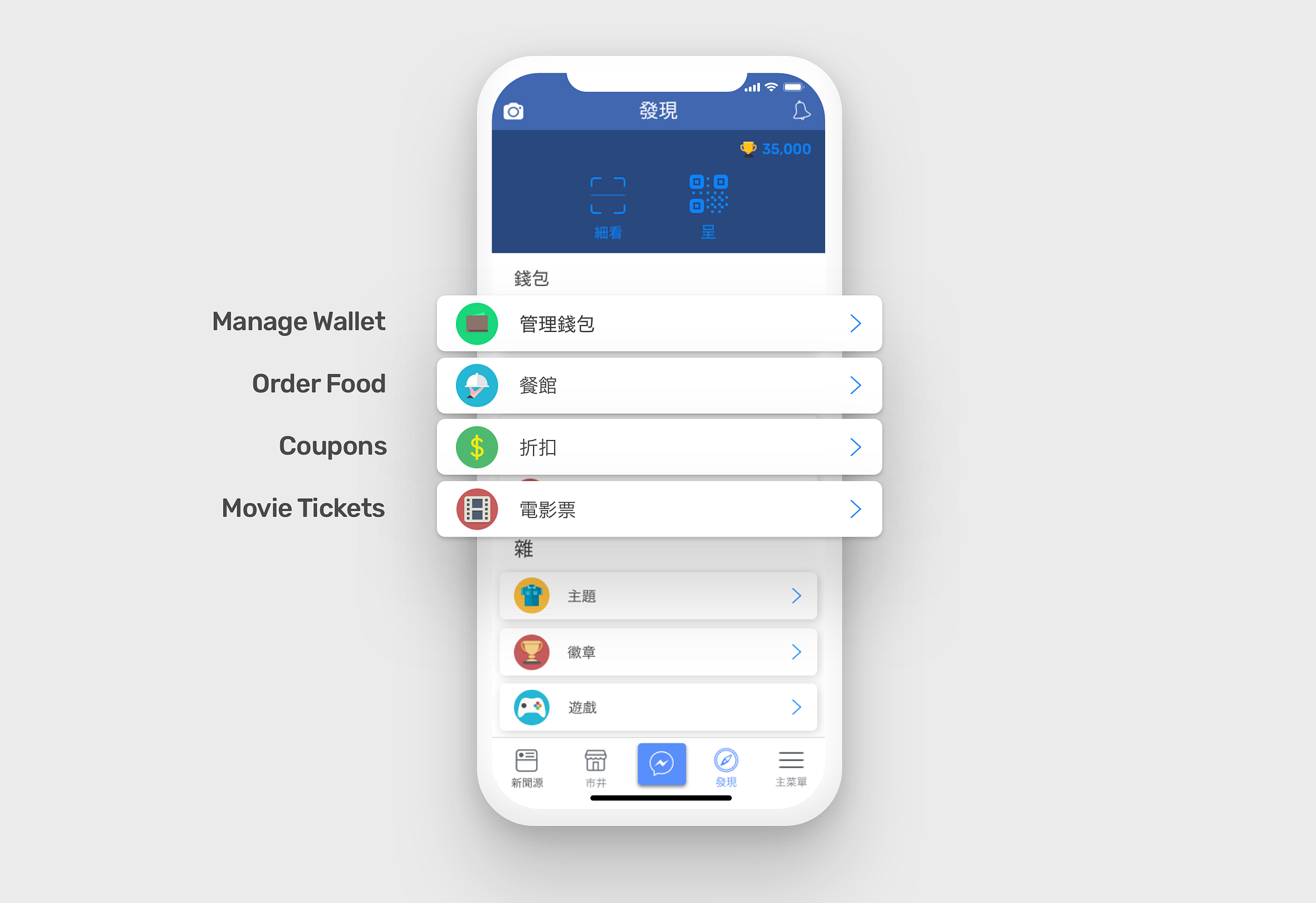
Location Services:
When Snapchat launched "Snap Maps," which lets users view their friend's location on an interactive map, many people became worried about the implications of automatically sharing locations with other people. Scary headlines like these emerged:
However in China, location sharing is a common part of many social media apps. WeChat and QQ, the two largest messaging apps, have a feature that lets you see "people nearby" and what these people have posted to their Moments. The app Momo, which went public in 2014, allows users to meet other people based on location and interests.
This higher level of comfort in location sharing is likely due to cultural differences. A research paper done by Shan Luo at Iowa State University found that Chinese students had a higher willingness to share personal information or intimate feelings on RenRen than American students did on Facebook. This inherent trust in both peers and social media platforms allows for location sharing to be far more exciting than intimidating to Chinese users.
I incorporated this location sharing on the main Facebook newsfeed, allowing users to find and chat with friends based on their location. Only active or recently active friends on Facebook will appear on this location feed.
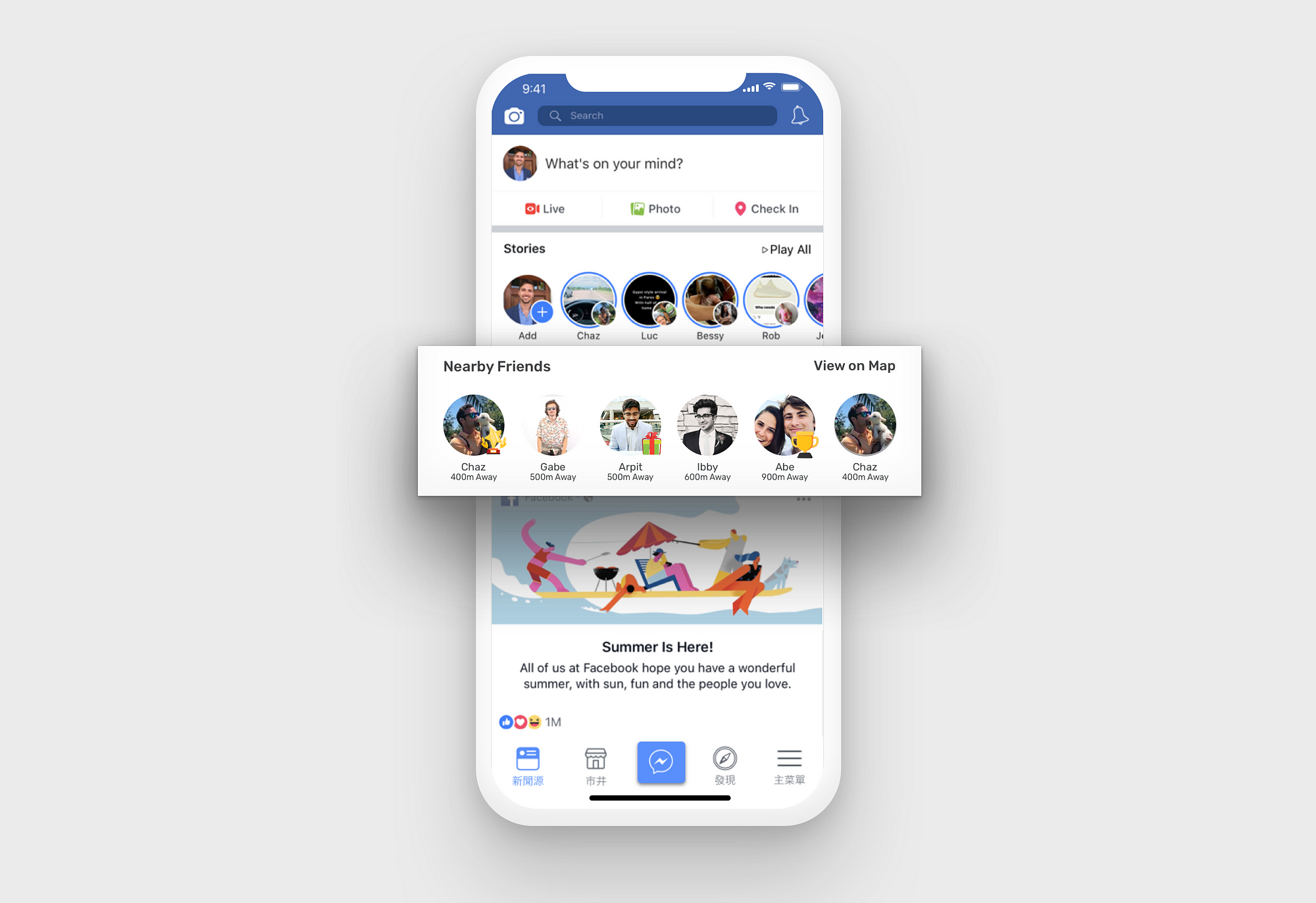
Facebook started as a way for friends to connect with one another and this location sharing feature is a great way to increase app interaction and connect users with one another, not just in the digital world.
Discover Page
The discover page on Chinese mobile apps is the equivalent of the hamburger menu or "more" button on Western apps. It's a page that houses all of the extra fun features of apps that I mentioned earlier like playing games or ordering movie tickets. This page provides an easy way to non-intrusively add new functionality found in some of these "super-apps". Often, this is represented by a compass icon, as shown by the UI on my Facebook redesign.
This new Discover page on Facebook will be a familiar addition for Chinese users who already use this functionality in many other apps. This new Discover page will hold features like the Wallet, in-app purchases, Games, Coupons and activities happening in your city.

Wait! There's More: Points and Custom Skins
Who doesn't like bonus features?
In the US, mobile apps use gamification to improve user engagement. In China, user engagement is seen as synonymous with gamification. I added some basic building elements of gamification into the Facebook mobile app that will allow it to develop a stronger strategy in the future.
Status Ranks/Points
First, Status Ranks and Points. This concept, used widely in mobile games and rewards programs, is now integrated in many mobile apps like QQ and Weibo.
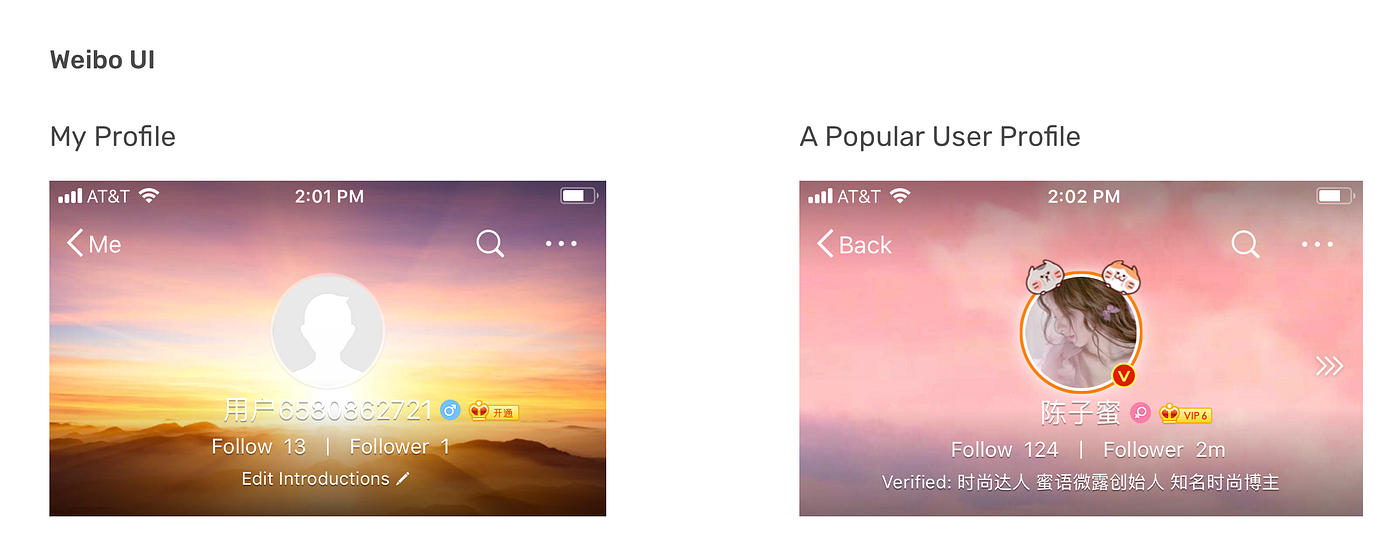
On my Facebook app, users would give "Facebook Coins" to one another through Facebook Live, or any area where the user is creating their own content. These coins would appear on their Discover page and would be exchanged for exclusive stickers, Messenger games or profile badges, as shown in the new "Nearby Friends" feature. In addition to creating a fun experience around collecting the coins, Facebook Coins will encourage users to continue creating and posting content (something that Facebook has struggled with recently).
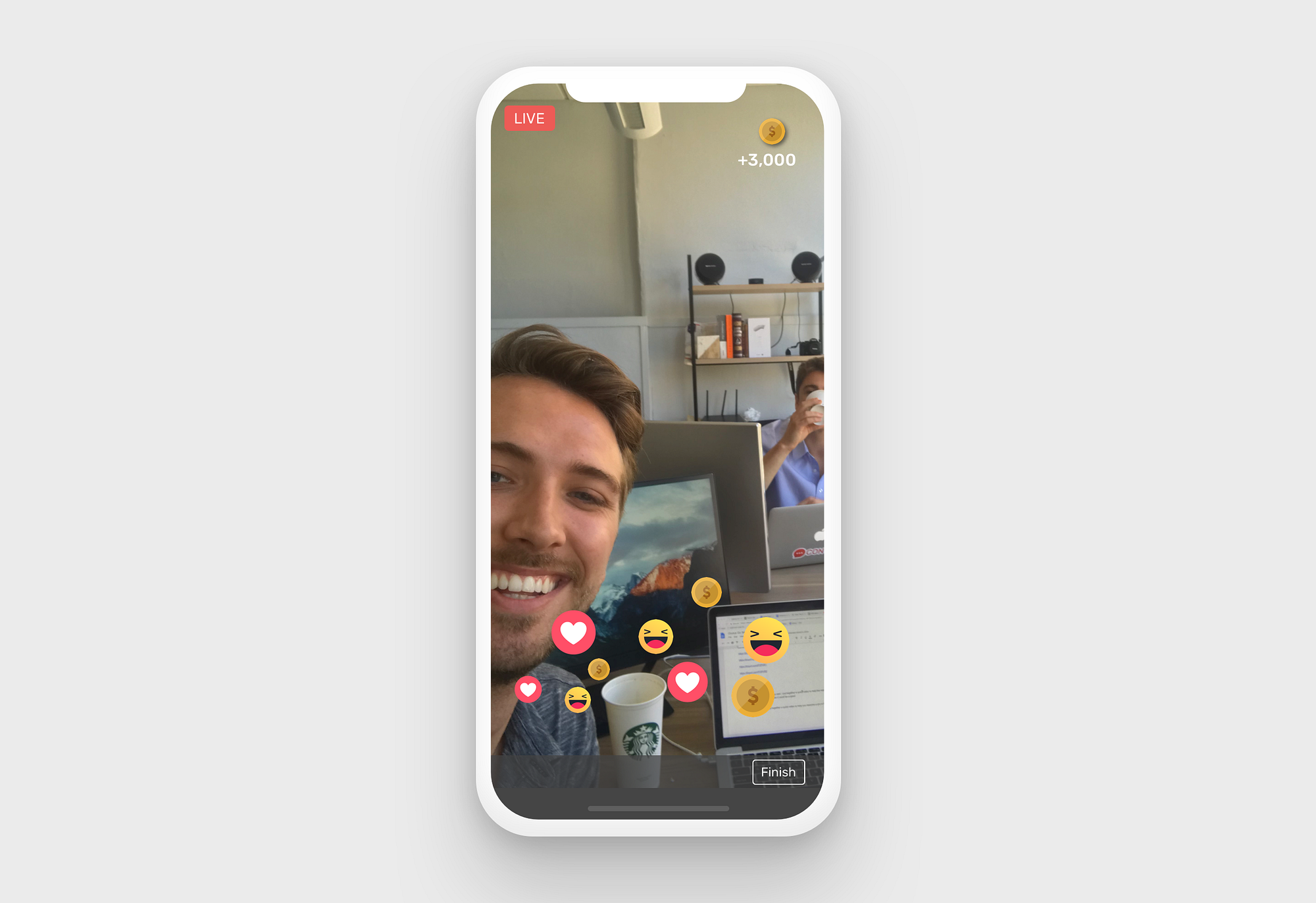
Custom Skins
A number of apps like QQ and Baidu allow you to change the theme of the UI, which is rare for United States iOS apps. This feature is often represented by a t-shirt or paintbrush icon. This theming is another common part of a gamification strategy for Chinese mobile apps.
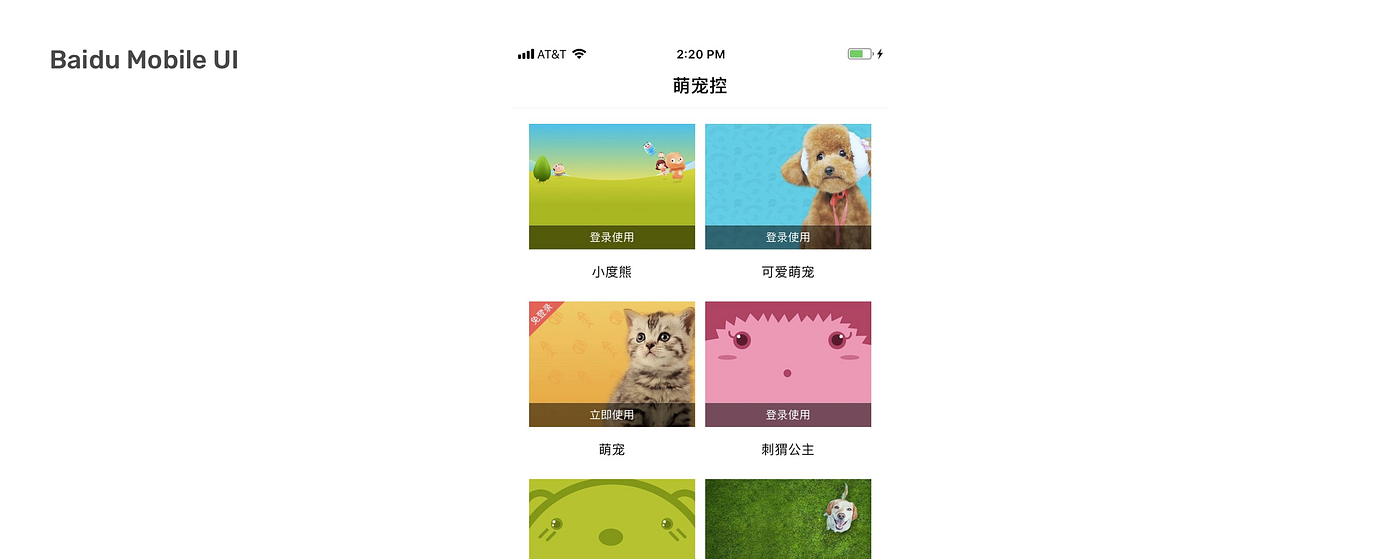
Obviously I chose the kitten background.
The Facebook app would easily integrate fun functionality like this on the new Discover page.
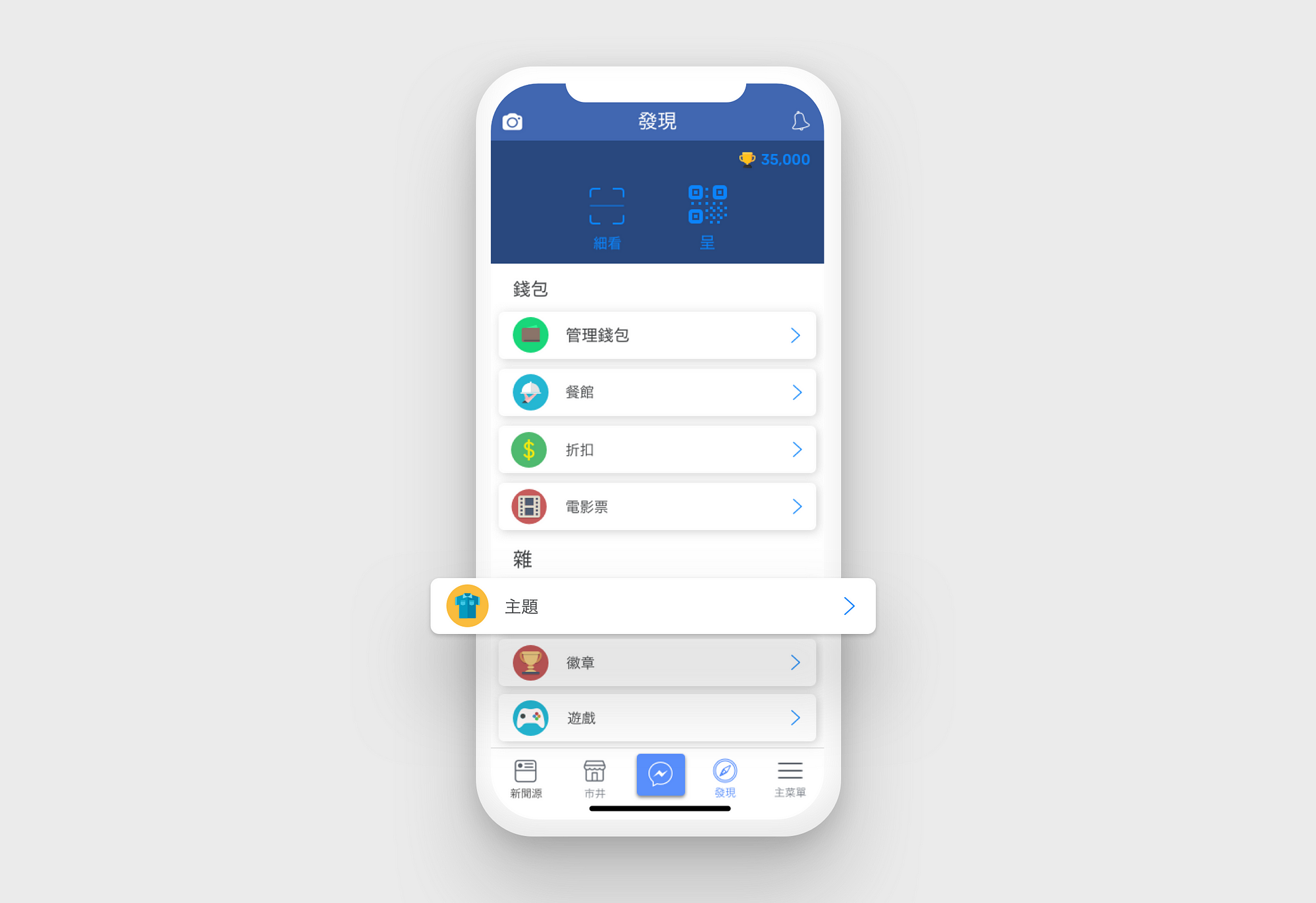
So What?
Product teams often use the term, "human centered design" as a universal catch-all when talking about their users and design approach. However, humans are a fragmented species with different languages, cultures and customs. Just as websites need to translate languages, design teams need to translate user experiences for new markets.
As you can see in the examples of Uber, Yahoo and eBay, even with a seemingly unlimited budget and a deep technological expertise, a western product will fail if the user experience is not translated for the Chinese market.
Design is a language, and to be best understood, it must be translated accordingly.
__________________________________________________________________
There were many other topics that I wanted to include in the article. If you're interested in learning more, here are some great starting points:
http://dangrover.com/blog/2014/12/01/chinese-mobile-app-ui-trends.html#location
http://dangrover.com/blog/2016/01/31/more-chinese-mobile-ui-trends.html
https://www.smashingmagazine.com/2016/08/five-rules-app-localization-china-money-dating-app-store/
https://lib.dr.iastate.edu/cgi/viewcontent.cgi?referer=https://www.google.com/&httpsredir=1&article=4975&context=etd
Us App Design And Chinese App Design
Source: https://uxdesign.cc/7-ways-to-adapt-your-mobile-app-for-chinese-consumers-a-facebook-case-study-bbabf6d26dca
Posted by: phelpspriever.blogspot.com

0 Response to "Us App Design And Chinese App Design"
Post a Comment